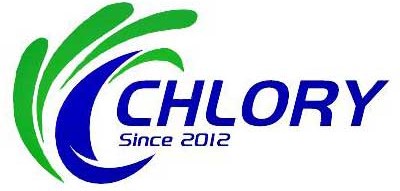Root Cause: Forest Soil Degradation and Plant Etiolation
Plant etiolation, particularly the loss of green leaves, is often a direct manifestation of soil problems. The main causes include:- Soil acidification and nutrient imbalance: Long-term acid rain and organic matter loss lead to excessive soil acidity, which immobilizes trace elements such as iron, magnesium, and manganese, making them unavailable to plants. Iron, a key element for chlorophyll synthesis, is a primary cause of chlorosis.
- Harmful microbial growth: Deteriorating soil conditions encourage the growth of soil-borne pathogens such as Fusarium and Rhizoctonia, which infect plant roots, hindering water and nutrient absorption, leading to "physiological drought" and chlorosis caused by malnutrition.
- Poor soil physical structure: Compacted soil has poor air permeability, hindering root respiration and reducing vitality. Even if nutrients are available, they are difficult to utilize efficiently.
The "Three Musketeers" of the Solution: Mechanism and Effect
1. Wood Vinegar Fertilizer: A Soil Conditioner and Nutrient Activator
Wood vinegar, a byproduct of wood distillation, is rich in over 200 natural ingredients, including organic acids, phenols, and alcohols.
- Effects on Soil Properties:
- Finely Adjusts pH: While inherently weakly acidic, wood vinegar binds to toxic ions like aluminum and manganese in highly acidic soils, mitigating their harmful effects. It also indirectly improves soil buffering capacity by promoting microbial activity.
- Promotes Aggregate Formation: The organic components in wood vinegar stimulate the growth of beneficial actinomycetes and bacteria in the soil. The metabolites of these microorganisms serve as the "glue" that forms soil aggregates, effectively breaking down compaction and enhancing water and nutrient retention.
- Chelates and Activates Nutrients: The organic acids in wood vinegar form soluble chelates with fixed elements like iron and phosphorus, allowing them to be reabsorbed by plant roots, directly targeting the cause of chlorosis.
Acidic Electrolyzed Fertilizer: A Highly Effective Disinfectant and Foliar Fertilizer
Produced by electrolysis of dilute brine or hydrochloric acid, its main component is hypochlorous acid (HClO), which has strong oxidizing and broad-spectrum bactericidal properties.
- Impact on Plant Chlorosis:
- Precise Control of Soilborne Diseases: Direct irrigation of the soil quickly eliminates pathogens that cause root rot and damping-off, creating a healthy growth environment for the root system and ensuring unobstructed nutrient absorption channels at the root.
- Foliar Replenishment and Cleansing: Foliar spraying not only prevents leaf diseases, but its slightly acidic and oxidizing properties also help remove dust from the leaves, open stomata, and promote photosynthesis. Furthermore, low-concentration hypochlorous acid rapidly decomposes into chloride ions and water in the environment, leaving no residue risk. The chlorine in the solution is also a trace element essential to plants.
Chlory Hypochlorous Acid Generator: The Core of Technology and the Guarantee of Application
Chlory equipment is the key to modernizing and facilitating this solution. It is no longer the traditional large-scale equipment used for water disinfection, but an intelligent tool that can precisely serve agriculture and forestry.
- Core Advantages:
- On-site preparation, ready for immediate use: Simply connect a power source, water, and a small amount of salt or dilute hydrochloric acid to produce a stable concentration of acidic electrolyzed water (hypochlorous acid water) on demand. This ensures product freshness and high efficacy, eliminating the hassles of storage and transportation.
- Precise and Controllable Concentration: The pH and available chlorine concentration (ACC) of the generated solution can be precisely adjusted to the severity of the problem in the forest. For example, high concentrations can be used for soil disinfection, while low concentrations can be used for foliar spraying or irrigation, achieving targeted treatment and avoiding pesticide damage.
- Safety and Economy: On-site preparation significantly reduces the cost of purchasing finished disinfectants. Furthermore, hypochlorous acid's inherent safety to humans and animals and environmental friendliness make it ideal for use in ecologically sensitive forest areas.
Synergistic Effects: A Systematic Approach Where 1+1+1 is More Than 3
Combining these three elements creates a closed-loop, highly efficient ecological management process:
Step 1: Soil Pretreatment and Disinfection
Use a Chlory generator to generate high-concentration acidic electrolyzed water. Irrigate the soil in severely chlorotic areas to quickly eliminate soil-borne pathogens, clearing the way for the recovery of beneficial microorganisms and plant roots.
Step 2: Soil Improvement and Nutrient Activation
In conjunction with deep tillage, apply wood vinegar fertilizer. Wood vinegar fertilizer not only continues to suppress residual harmful bacteria but also strongly activates the existing beneficial microbial flora in the soil, improves the physical structure, and activates and releases fixed iron.
Step 3: Ongoing Maintenance and Foliar Intervention
During the growing season, regularly spray foliage with low-concentration acidic electrolyzed water generated by a Chlory generator to prevent diseases and clean leaves. Simultaneously, dilute wood vinegar can be used for root irrigation to continuously regulate the rhizosphere microenvironment and consolidate the improvement results.
The synergistic effect is manifested as follows:
HOCL water is responsible for "breaking," dismantling the dominance of harmful microorganisms.
Wood vinegar fertilizer is responsible for "building," establishing a healthy, fertile new soil ecosystem.
The Chlory generator is the "intelligent arsenal" that runs the entire process, providing precise and flexible ammunition support.
Conclusion and Outlook
The combination of wood vinegar fertilizer and acidic electrolyzed water fertilizer represents a shift in ecological management philosophy from "fighting nature" to "accommodating and guiding nature." The introduction of the Chlory hypochlorous acid generator provides a powerful technical foundation for this philosophy, making it standardized and scalable. Widely exported to Brazil, Argentina, Australia.
Faced with increasingly severe forest ecological challenges, we need innovative solutions that deeply integrate traditional wisdom (wood vinegar) with modern technology (electrolyzed water technology and smart devices). This solution can not only effectively reverse soil degradation and cure plant etiolation, but also gradually restore the self-regulating and sustainable production capacity of forests, contributing a practical and technological force to the realization of the grand blueprint of "Green Waters and Lush Mountains."
